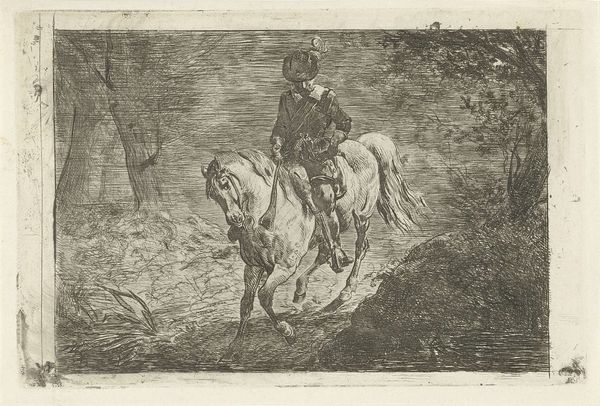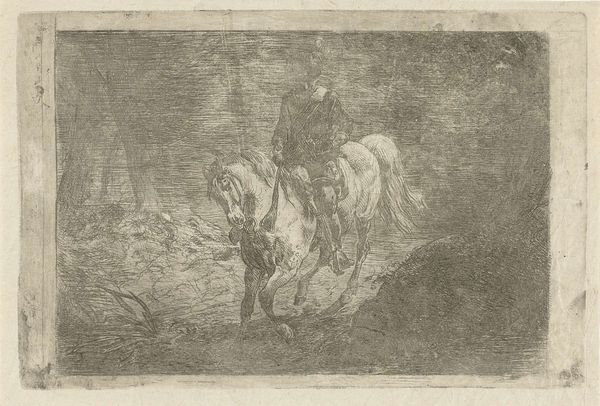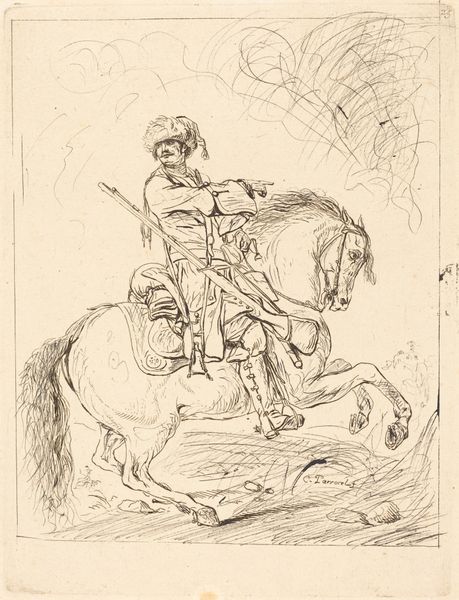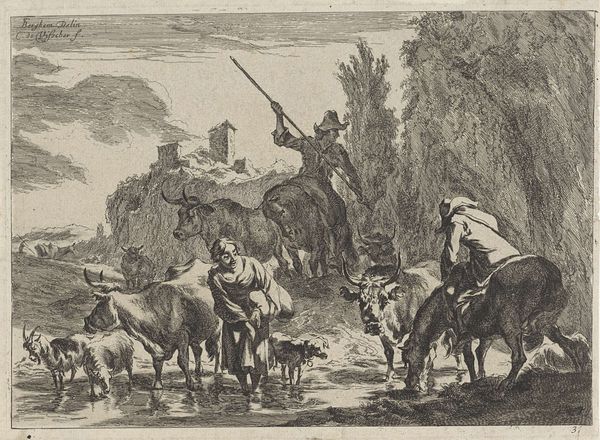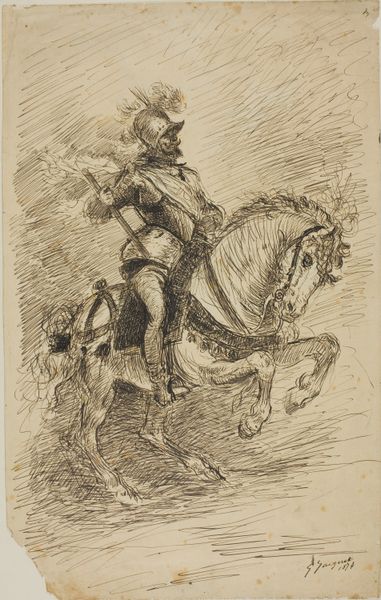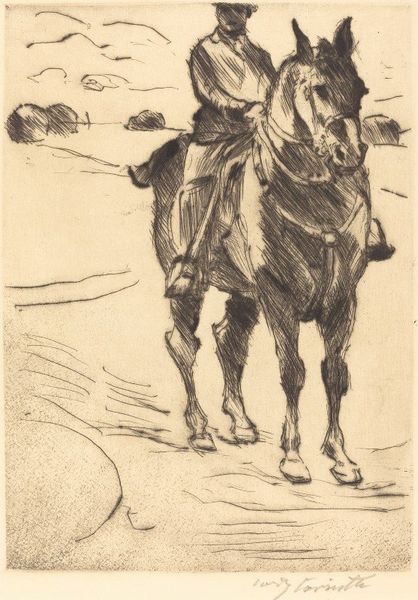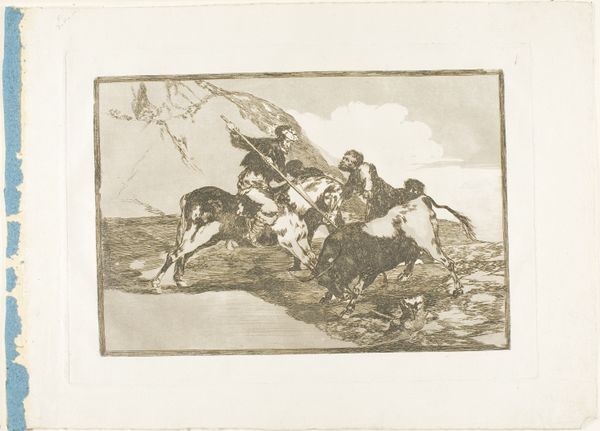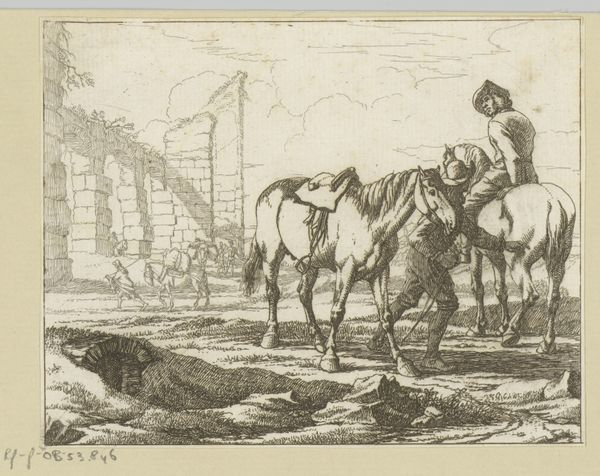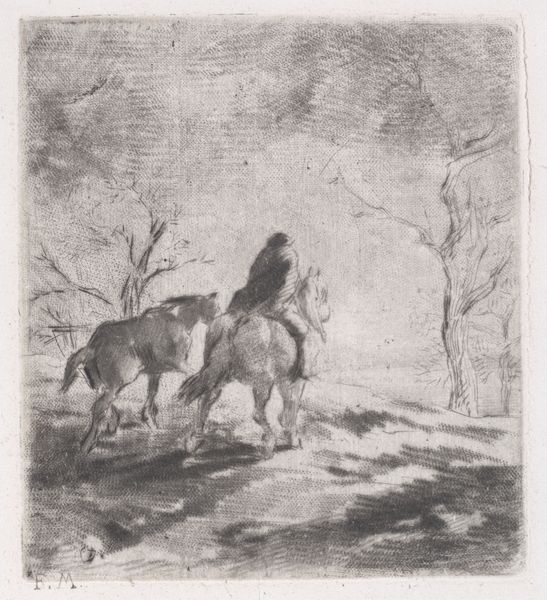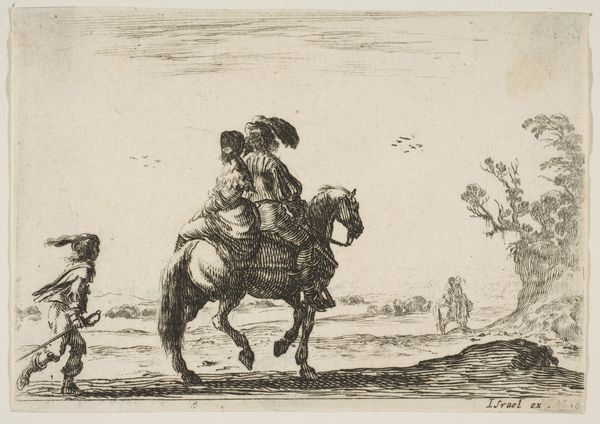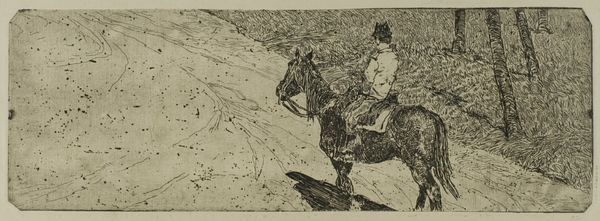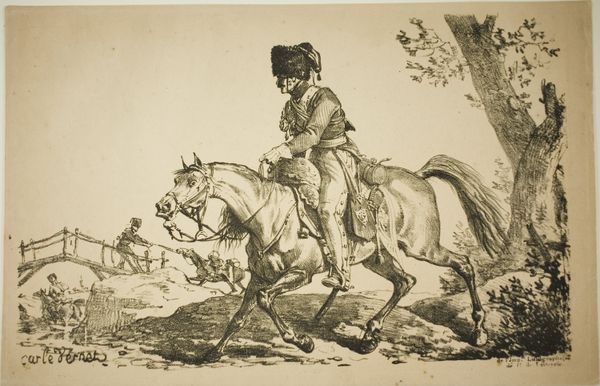
Dimensions: height 126 mm, width 174 mm
Copyright: Rijks Museum: Open Domain
Curator: This is Karel Frederik Bombled’s "Ruiter," dating somewhere between 1832 and 1902, housed here at the Rijksmuseum. Editor: Ooh, quite dramatic! The shadowy rider and the spectral moonlight – feels like a scene ripped from a gothic novel, all done with etching. What an intricate pen sketch to start with! Curator: Indeed! The technique is primarily ink and etching, with some engraving. Notice how Bombled utilizes the fine lines to create not only form, but also a sense of movement and texture, especially in the horse’s mane and the rider’s clothing. Editor: The whole piece feels built on labor – imagine the time involved in hatching all those lines. But think about the access – was this an artwork produced with affordable materials aimed at a wider public? Curator: It leans towards the Romantic style, a time when artists explored emotion, nature's sublime power and a sense of individualized experiences, the solitary figure on horseback furthering that theme. What I find compelling is the story it hints at, the destination the rider is travelling to, maybe a message they carry...it calls on one’s imagination to run a bit. Editor: Agreed, but I find it equally crucial to recognize these romantic portrayals exist within the bounds of material culture, each mark is intentional not only to aesthetic representation but the realities of artistic creation. It prompts the question of how many similar, yet unknown artworks and crafts remained unseen due to constraints within that economic model. Curator: It's beautiful how your view pulls into frame a socio-economic background where these things take form, and it lets the discussion extend further out into a space that involves its moment in history! Editor: Precisely, this piece isn't just romantic escapism—it's an artifact deeply enmeshed in its production conditions and consumption. Viewing art in such a way can provide insight into understanding historical eras and class structure! Thank you! Curator: Absolutely, thank you. It is always worth to consider art as a physical imprint of labor.
Comments
No comments
Be the first to comment and join the conversation on the ultimate creative platform.
